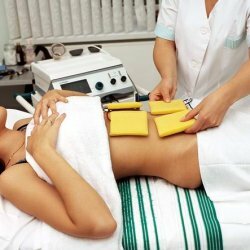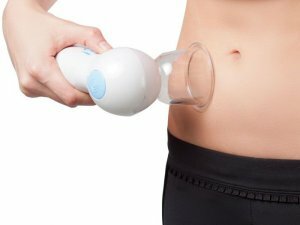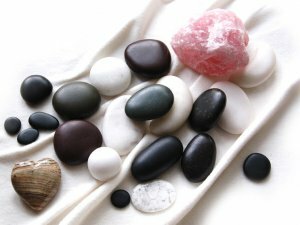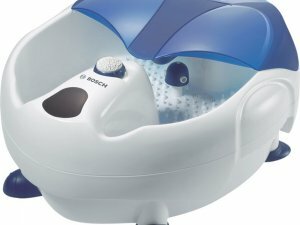Description of methods of physiotherapy
 The main goal of physiotherapy is stimulation of reparative processes, improvement of metabolic processes and microcirculation in tissues. In addition, physiotherapy relieves muscle tension, raises the tone of weakened muscles and has an anesthetic effect. Doctors prescribe physiotherapy for various diseases. It is one of the most effective components of rehabilitation.
The main goal of physiotherapy is stimulation of reparative processes, improvement of metabolic processes and microcirculation in tissues. In addition, physiotherapy relieves muscle tension, raises the tone of weakened muscles and has an anesthetic effect. Doctors prescribe physiotherapy for various diseases. It is one of the most effective components of rehabilitation.
At the heart of physiotherapy is the effect on the body tissues of physical and natural factors: heat, cold, eclectic current, magnetic field, ultrasound, laser, and the like. Doctors use many methods of physiotherapy: electrostimulation, paraffin applications, phono and electrophoresis, magnetotherapy, ultrasound and others.
Electrostimulation
Electrostimulation is the procedure in which an alternating low-voltage electric current affects the muscles. The procedure causes deep muscle contractions, thereby increasing muscle tone, and strengthening the muscles. Doctors say that electrostimulation makes the muscle work 100%.
In the rehabilitation stage after the operation on the spinal column, this procedure plays an important role, since it allows to strengthen the muscular corset around the spine. In the case of muscle overstrain, electrostimulation allows them to relax. In addition, this procedure enhances blood and lymph circulation in the area of stimulated muscles, which improves the delivery of nutrients. If, after physical training, to carry out such a procedure, lactic acid will not accumulate in the muscles, which means that pain will not arise.
However, there are some contraindications to electrical stimulation: dislike of electrical impulses, thyroid and cardiovascular diseases, periods of menstruation, pregnancy, epilepsy, inflammation and tumors, use of pacemakers.
Electrophoresis
During this procedure, drugs are injected under the skin using a direct current. Thanks to this method of administration, the drug gets directly to the right place and has almost no systemic effect on the whole organism, which means that the risk of side effects is reduced. Such a procedure is safe and has practically no contraindications to the use.
During the procedure, the doctor applies a plate of the electrophoresis device to the area where he wants to inject the medicine, while the other plate is placed on the opposite side. Under the plate imposes a cloth moistened in a medicine. Under the influence of a constant electric current, the molecules of the drug are transported inland. Thanks to electrophoresis, the doctor can simultaneously inject several drugs into different places.
After the procedure, a medicine accumulates in the skin, which can last for three weeks. Drugs are removed from the body slowly, but they do not do any harm. Electrophoresis allows you to dose the amount of the drug administered by changing the electrode, the concentration of the solution, the duration of the effect or the current.
Phonophoresis
This procedure is very similar to electrophoresis. But in this case, ultrasound is used instead of an electric current to introduce the drug. The principle of the procedure is based on the effect of mechanical vibrations on tissues with a frequency above 16 kHz. Such vibrations exert a kind of massage on the cells, penetrating deep into 6 cm. During the procedure, local blood circulation, cell exchange and lymph drainage activation takes place. Ultrasound improves the processes of repair and healing, has analgesic and anti-inflammatory effects, and also reduces puffiness. Active substances accumulate in a certain area of the skin and gradually enter the blood in the right quantities.
UHF therapy
UHF therapy is one of the most commonly used methods of physiotherapy. The procedure is based on the effect on the tissue of ultra-high frequency electric field pulses at 40.68 MHz. Under the influence of such impulses, heat develops in the tissues, which is formed due to eddy currents. Thanks to the procedure, local blood circulation in the tissues intensifies, impulses along the nerve fiber accelerate, the number of leukocytes increases, the regulatory functions of the nervous system increase, and the like. In addition, the procedure has a regenerating and analgesic effect on the tissues.
Paraffin therapy
This is another popular method of heat exposure to the tissues of a sick person. Paraffin treatment has anti-inflammatory and analgesic effects, activates metabolic processes, improves blood circulation in tissues, restores conduction of nerve impulses, and also relieves muscle spasms. Most often, such procedures are prescribed for the treatment of degenerative diseases of the spine and musculoskeletal system.
The procedure has many contraindications for use: hypertension, tuberculosis, acute inflammatory diseases, endocrine diseases, benign and malignant tumors, liver cirrhosis and a tendency to bleeding.
Paraffin has a high heat capacity, due to this, it retains heat for a long time and releases it, while exerting a pronounced heating effect on the fabric. When this procedure is performed, tissue overheating does not occur. This is due to the fact that upon hardening, paraffin forms a film on the skin, the temperature of which quickly falls to the temperature of the skin.
For medical purposes, doctors use white paraffin. It is applied to dry skin. First, the paraffin is heated to a temperature of 80 degrees, then it is allowed to cool and only after that it is applied to a sore spot in several layers. The thickness of the layer is approximately 1-2 cm. Over the frozen paraffin, an oilcloth or paper is applied, which is covered with a towel or a cloth on top. The duration of the procedure is from thirty minutes to an hour. After that the paraffin is removed. Such applications are carried out daily or every other day. As a rule, they are made before bedtime.
Shockwave therapy
Most often this method is used to treat diseases of the spine and musculoskeletal system. In 90% of cases, treatment is effective. By its effectiveness, this method of treatment can be compared with surgical treatment. The advantage of shock wave therapy before surgical treatment is that there is no risk of complications. The essence of the procedure is that sound waves affect the diseased area and transmit energy. The depth of penetration of an acoustic wave can reach up to seven centimeters. Such therapy has a stimulating effect on the processes of repair and regeneration.
In addition, the Department of Internal Affairs has an effective and relatively fast analgesic effect, relieves stress and muscle spasms, improves trophism of the spinal tissues around the joints, increases the production of collagen, loosens limestone deposits and fibrosis areas and accelerates metabolism in tissues.
Doctors prescribe UHT with: rehabilitation after spinal surgery, degenerative diseases, shoulder pain, epicondylitis, exostosis, pain in the palmar part of the wrist, bursitis, pain in the groin area, pain in the kneecap, At fractures of joints and bones, at sports traumas and so forth.



